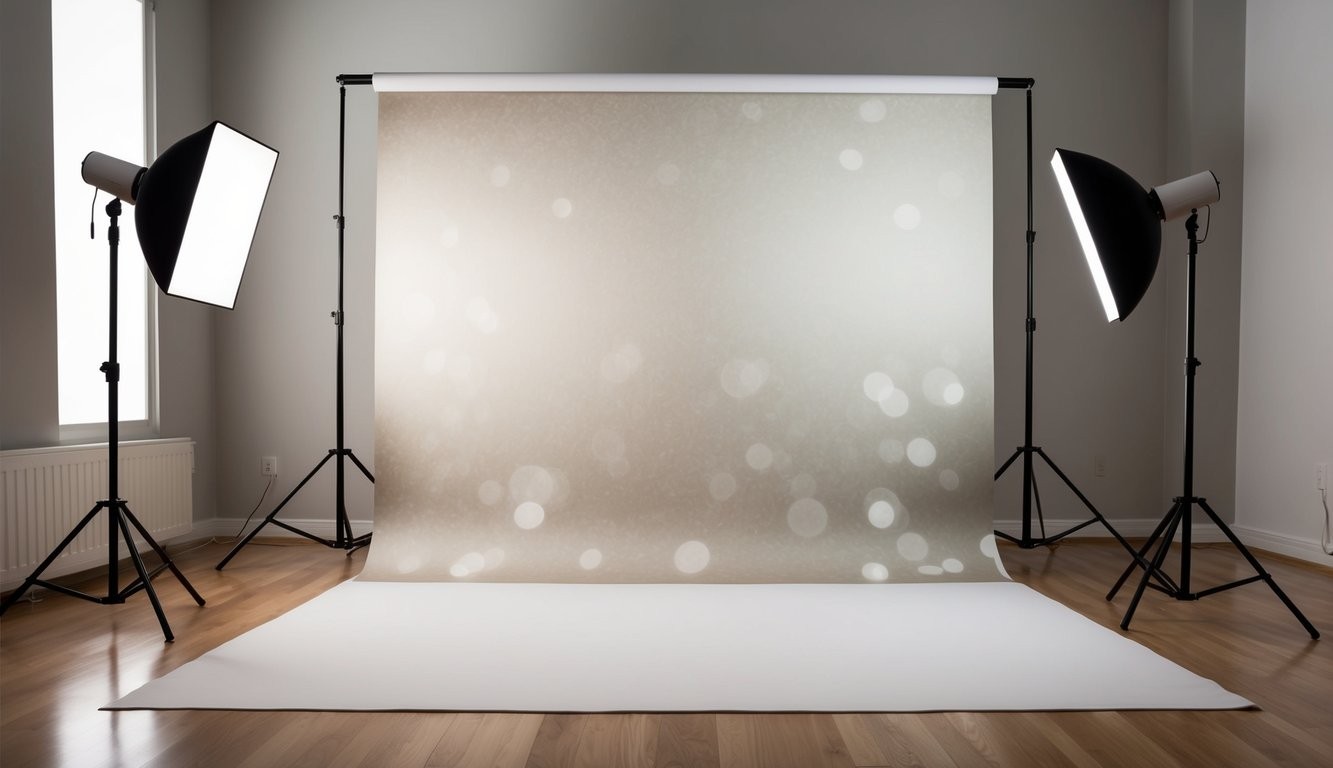Neutral colors like white, light gray, and black are always reliable choices. They keep the focus on the person while working well across different platforms. For those in creative industries, using bold and colorful backgrounds can really make a headshot pop.
I also consider the setting when picking a background. Indoor environments, like cozy coffee shops or sleek tech agencies, add character and narrate a story. However, it's important to ensure that any virtual backgrounds used don't appear fake or overly altered. A balanced approach creates an engaging and professional headshot.
Selecting the Right Background

Choosing the right background for a headshot involves deciding between solid colors and patterns, using color theory for complementary backdrops, and selecting between indoor and outdoor environments. Each option influences how the subject is perceived and can enhance the professionalism and appeal of the final image.
Solid Colors vs. Patterns
When I choose a background for a headshot, I often consider solid colors first. They create a clean and professional look. Solid colors can help keep the focus on the subject’s face, ensuring that nothing distracts from important features like the eyes or smile.
Patterns, while sometimes eye-catching, can become a distraction if too bold or busy. A subtle pattern might work to add depth and interest, but I have to be cautious with patterns as they can easily overshadow the subject. For professional settings, solid colors are generally a safer choice because they offer simplicity and elegance.
Color Theory for Complementary Backdrops
Using color theory can really make a headshot stand out. I always think about how background colors interact with the subject’s features, like hair and skin tone. For example, a warm, earthy background can complement darker skin tones nicely, while a cooler background might suit someone with lighter features.
Color wheels are helpful tools in this process. They guide me in choosing colors that complement or contrast in appealing ways. By selecting the right complementary backdrops, I can ensure the headshot attracts the right kind of attention and conveys the intended mood or message.
Indoor vs. Outdoor Environments
Deciding between indoor and outdoor environments often depends on the image I want to create. Indoor backgrounds allow for more control over lighting and atmosphere, whether in an office setting or a custom-designed space. This control helps maintain a professional and polished look.
On the other hand, outdoor environments can offer a natural and vibrant feel. Locations like parks or urban settings can add character and context to the photo. However, I have to be careful with outdoor shots as they may pose challenges with lighting and distraction. Each choice serves different purposes, and understanding these can help in selecting the right environment for the headshot.
Technical Considerations

When choosing headshot backgrounds, technical aspects play a crucial role. Lighting can affect the mood of a photo, depth of field influences how the background interacts with the subject, and textures can add visual interest. Balancing these factors helps create standout headshots.
Lighting and Shadows
Lighting is essential for headshots as it influences the appearance of both the subject and the background. I focus on finding a well-lit space that highlights my subject while avoiding harsh shadows. Soft, even lighting is best because it flatters the subject's features and ensures consistency. Natural light can be an excellent choice when available, providing a warm and authentic look.
It's also important to control artificial lighting. I use diffusers or reflectors to soften light sources. Check how light falls on both the subject and the background to avoid unwanted shadows or bright spots that can draw attention away from the main subject. Adjusting the light angle lets me create a balanced and appealing shot without distractions.
Depth of Field and Focus
Depth of field determines how much of the image is in focus. A shallow depth of field helps blur the background, making the subject stand out. When I'm photographing in busy environments, this is especially useful to keep attention on the person rather than the background details. I adjust my camera settings, like aperture, to achieve this effect.
Achieving the right balance of focus ensures the subject is sharp while the background fades into a pleasing blur. However, it's crucial to avoid overdoing the blur. Too little depth can result in an indistinct image, while too much can make everything look the same. Careful adjustments are key to maintaining the proper relationship between the foreground and background.
Background Textures and Materials
Textures and materials in a background can add depth and personality to headshots. I examine the backdrop for elements that might distract from the subject. Smooth, simple materials like plain walls or cloth provide a clean look. For something unique, I might use textured walls or fabric, offering subtle patterns that don't overpower the subject.
To get the desired effect, I must ensure that the material complements the subject's clothing and personal style. By experimenting with different backgrounds, such as brick, wood, or fabric, I can find what works best. It's important to test various options to see how they interact with light and camera settings, ensuring that the background enriches, rather than detracts from, the overall image.
Frequently Asked Questions
In this section, I dive into common queries about choosing the right background for headshots, covering color choices, preferences for different professions, and tips for both virtual and outdoor settings. I also provide guidance on editing backgrounds in Photoshop to enhance your headshots.
How can I choose the ideal background color for my headshots?
Choosing the ideal background color depends on your goals and the message you want to convey. If you aim for a clean and timeless look, go for neutral tones. Bright colors can highlight personality but might be too bold for certain professional settings.
Which is preferable for professional headshots: a white or a black backdrop?
A white backdrop offers a clean and classic appearance, ideal for making subjects stand out clearly in industries like corporate or professional services. A black backdrop can create a dramatic effect and is popular in fields such as law or among freelancers due to its sophisticated look.
What are the best practices for selecting a background for acting headshots?
For acting headshots, it's important that the background does not overshadow the subject. Neutral tones or simple backdrops ensure the focus remains on your features. Consider what roles you typically go for and choose backgrounds that complement those characters.
Can a virtual background be effectively used for professional headshots, and if so, how?
Virtual backgrounds can be used successfully if they are chosen carefully. Make sure they are simple and professional. When creating a virtual background, ensure good lighting and consistent quality to maintain a professional impression.
What are some tips for editing a headshot background in Photoshop?
In Photoshop, start by using tools like the Quick Selection Tool to isolate the subject. Then, refine the edges carefully. You can adjust the background color or add a slight blur to give your headshot depth. Remember, subtle edits often work best for maintaining a natural look.
Are outdoor environments suitable for professional headshots, and what should one consider?
Outdoor environments can provide a fresh and natural look for headshots. When choosing an outdoor setting, consider factors like lighting and distractions. Aim for locations with soft, even lighting, avoiding harsh sunlight or overly busy backgrounds to keep the focus on the subject, enhancing their features naturally.



